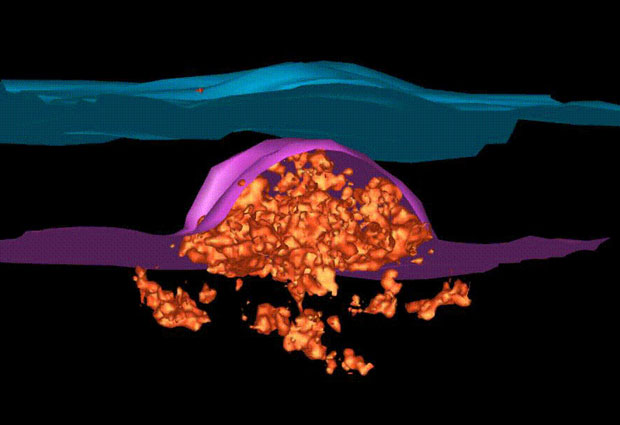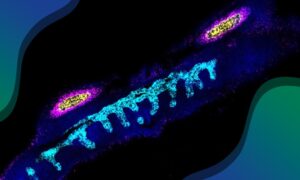
Watching nuclear pores in growing nuclei
Puzzle of nuclear pore formation in growing nuclei solved

This image answers the puzzle of how a new nuclear pore forms across the double membrane that encloses a cell’s nucleus. Scientists at EMBL have found that the nuclear pore complex rises up from the inside in a mushroom shape before penetrating this barrier.
From the inside out
Nuclear pores are the largest molecular machines known and act as gateways between a cell’s nucleus, which holds genetic information, and the rest of the cell. To protect the precious contents of the nucleus it is surrounded by not one but two membranes, much like double bagging your shopping. The nuclear pore spans these two membranes and controls all transport across them. But how these nuclear pores insert themselves into such a secure boundary has remained a mystery.
Scientists at EMBL Heidelberg, led by Martin Beck and Jan Ellenberg, used live cell imaging and high-resolution electron microscopy techniques to look at intact human cells with growing nuclei and watch nuclear pores form. Postdoc Shotaro Otsuka found that the proteins form a mushroom shaped complex that deforms the inner membrane of the nucleus. The inner membrane then fuses with the outer membrane, allowing the nuclear pore to expand into its functional structure.



